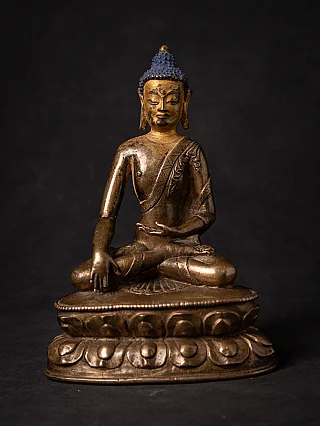Tibetan Buddhism
Author : Peter Vredeveld

Tibetan Buddhism is one of the popular series of Mahayana Buddhism and is especially practiced widely in Tibet, Mongolia, Tuva, Bhutan, Kalmykia and certain regions of Himalayan regions of Nepal and India.
Tibetan Buddhism is one of the popular series of Mahayana Buddhism. It is widely practiced in Tibet, Mongolia, Tuva, Bhutan, Kalmykia, and certain Himalayan regions of Nepal and India. Tibetan Buddhism is the body of Buddhist religious doctrines. Tibetan Buddhism is also known as Lamaism and is the form of Mahayana Buddhism. It is believed to have been developed in the 7th Century CE. Tibetan Buddhism is declared as the state religion of Bhutan. The Tibetan Buddhist tradition is gaining popularity in many western countries.
Tibetan Buddhism comprises the philosophy of Madhyamika and Yogacara, Tantric symbolic rituals, the shamanistic features of the Bon religion, and the Theravadin discipline. Tibetan Buddhism is based on the teachings of three significant vehicles of Buddhism: Mahayana, the Foundational Vehicle, and Vajrayana. Tibetan Buddhism is most well-known to the world through the existence of the Dalai Lama. The Dalai Lama is the exiled spiritual and political leader of Tibet. In 1989, The 14th Dalai Lama was awarded the Nobel Peace Prize for his lifelong advocacy for Tibetans inside and outside Tibet.
In Mahayana Buddhism, one's goal is to achieve the Enlightenment of Buddhahood so that one can help and guide all sentient beings to attain the state of Enlightenment. It is believed that the motivation behind this is the Bodhicitta mind of Enlightenment, who became enlightened for the sake of helping and guiding all sentient beings. Tibetan Buddhism teaches methods, which include the Vajrayana path in Mahayana to achieve Buddhahood.
Origin
The first significant event in Tibetan Buddhism's history was during the 7th Century (c. 641). However, it is found in some texts that certain Buddhist scriptures arrived in Southern Tibet from India in early 173 AD. During the reign of King Songtsen Gampo, he unified Tibet and married two Buddhist wives (Princess Wencheng from China and Princess Bhrikuti Devi from Nepal). Princess Bhrikuti Devi is known as Bal-mo-bza' Khri-btsun, Bhelsa Tritsun, and Khri b tsun and is believed to be the incarnation of Tara. According to Tibetan Tradition, Bhrikuti was a devout Buddhist and brought many sacred images and texts and expert Nepali artisans as a part of a dowry. Nepali artisans originally constructed the Red Palace of Marpo Ri in Lhasa under Bhrikuti's wishes. King Songtsen Gampo then made Buddhism a state religion of Tibet, built 108 Buddhist temples in the region, and constructed Jokhang Temple to house the Buddha statues.
The most important in Tibetan Buddhism history was when the great Tantric Padmasambhava of India arrived in Tibet in 774. It was Padmasambhava (popularly known as Guru Rinpoche) who merged Tantric Buddhism with the local religion Bon, which conflicted with the Buddhist religion started by King Songtsen Gampo, to form a new tradition we now recognize as Tibetan Buddhism. One of the oldest Tibetan schools, Nyingma, from which all the other Tibetan Buddhism schools were derived, was established by Padmasambhava. Padmasambhava greatly influenced Tibetan Buddhism and wrote many Tibetan scriptures for future monks.
General Methods of Practice

Tibetan Buddhism comprises various methods of practicing Buddhism and they are as follows:
1. Transmission
The method of Oral transmission is one of the most used in Tibetan Buddhism. Oral Transmission is especially done by lineage holder of Tibetan Buddhism and it take place in small groups or mass gatherings of listener.
2. Devotion to a Guru
The Tibetan Buddhist is called a lama. And in Tibetan Buddhism as well as other Buddhist tradition, devotion to a guru or teacher (lama in Tibetan Buddhism) is highly prized.
3. Approach to Vajrayana
Vajrayana tradition is practiced by most of Tibetan Buddhism since Tibetans believed that Vajrayana is the fastest method to attain Buddhahood.
Schools of Tibetan Buddhism
The four main schools that teach the Tibetan Buddhism are:
Nyingma
Nyingma is also known as Schools of the Ancients. It is the oldest Tibetan Buddhist school established in Tibet and second largest after Geluk Tibetan School. This school is based on the teaching of Padmasambhava since he is referred as the “Second Buddha”. The Nyingma School uses a distinctive doctrine which is called Dzogchen (“Great Perfection”).
Sakya
It is the smallest Tibetan Buddhist school compared to other three schools. It is named after the word Sakya (“Gray Earth”) monastery in the southern Tibet. The Sakyapa School had great influence during 13 and 14th Centuries.
Kagyu
Kagyu is the third largest Tibetan Buddhist school in the Tibet. The meaning of Kagyu is Oral Transmission School.
Gelug
Gelug is the largest Tibetan School but is the youngest school among the four main schools of Tibetan Buddhism. Gelug School can be interpreted as School of Virtuous and also called Yellow Hats.
"Dalai Lama"
The Dalai Lama heads one of the most critical and dominant schools of Tibetan Buddhism, The Gelug (Yellow Hats) School. The Dalai Lama is believed to be the successor or manifestation of Avalokiteshvara. The current Dalai Lama is Tenzin Gyatso, and he won the Nobel Peace Prize in 1989. The unique characteristics of the Dalai Lama are its system of reincarnating lamas.
"The Jokhang Temple"
The Jokhang Temple, located on Barkhor Square in Lhasa, is the first Buddhist temple in Tibet. For most Tibetans, the Jokhang temple is the most sacred and essential in Tibet. It is listed as a UNESCO World Heritage Site and is Lhasa's most popular tourist attraction.
Share this page






















